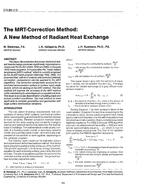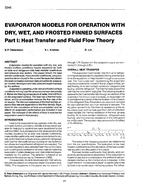Thermal systems in automobiles (HVAC, engine cooling, transmission,power steering) have significant energy requirements that can adversely affect vehicleperformance. New and innovative approaches are required to provide the customerthe desired comfort in an energy-efficient way. In recent years, efficiency ofthe thermal systems has increased significantly compared to systems used in theearly to mid-1990s. Providing thermal comfort in an energy-efficient way haschallenged the automotive industry to search for innovative approaches tothermal management. Hence, managing flows of heat, refrigerant, coolant, oil,and air is extremely important because it directly affects system performanceunder the full range of operating conditions. This creates significantengineering challenges in cabin and underhood thermal management. Optimizationof the components and the system is required to fully understand thecomponents’ effects on the system. Thus, modeling the components and the systemis essential for performance predictions. Simulation of thermal systems isbecoming an essential tool in the development phase of projects. Durability andreliability are also important factors in design of these systems.
Design FactorsAir-Handling SubsystemHeating SubsystemRefrigeration SubsystemNo. of Pages: 18
Citation: 2019 ASHRAE Handbook¿¿¿HVAC Applications
Product Details
- Published:
- 2019
- Number of Pages:
- 18
- Units of Measure:
- Dual
- File Size:
- 1 file , 4.3 MB
- Product Code(s):
- D-A112019SI


